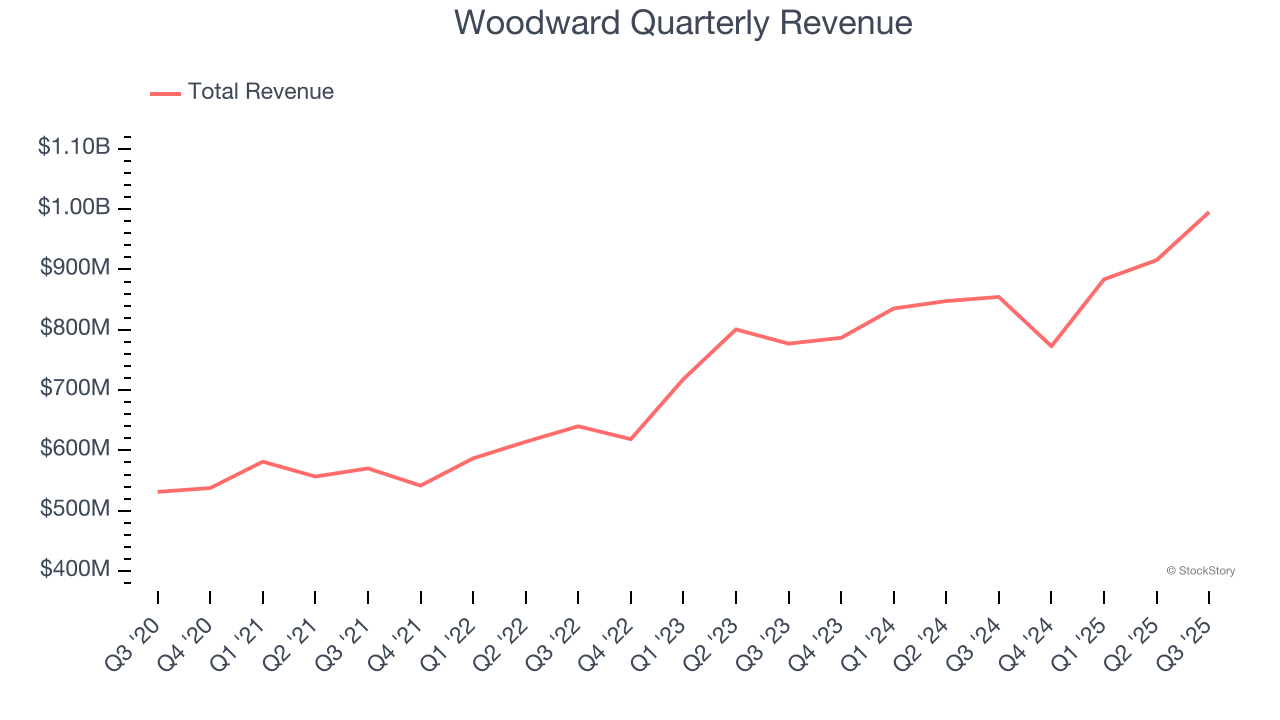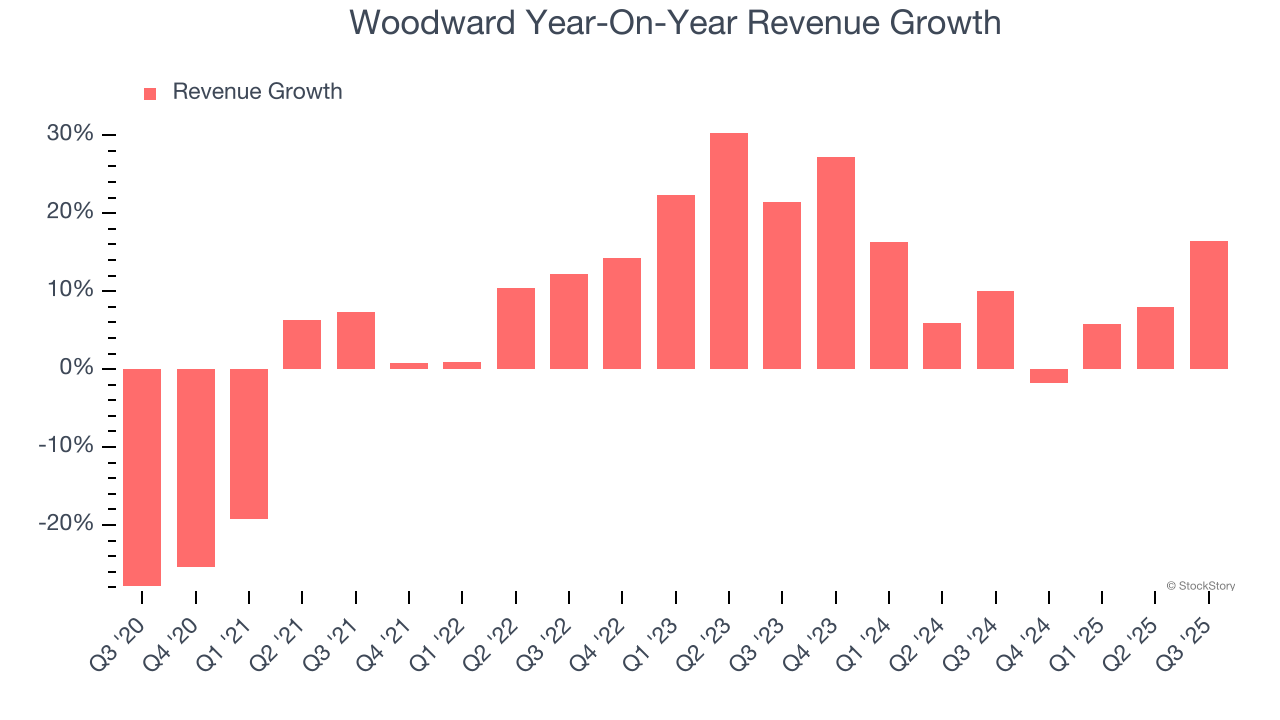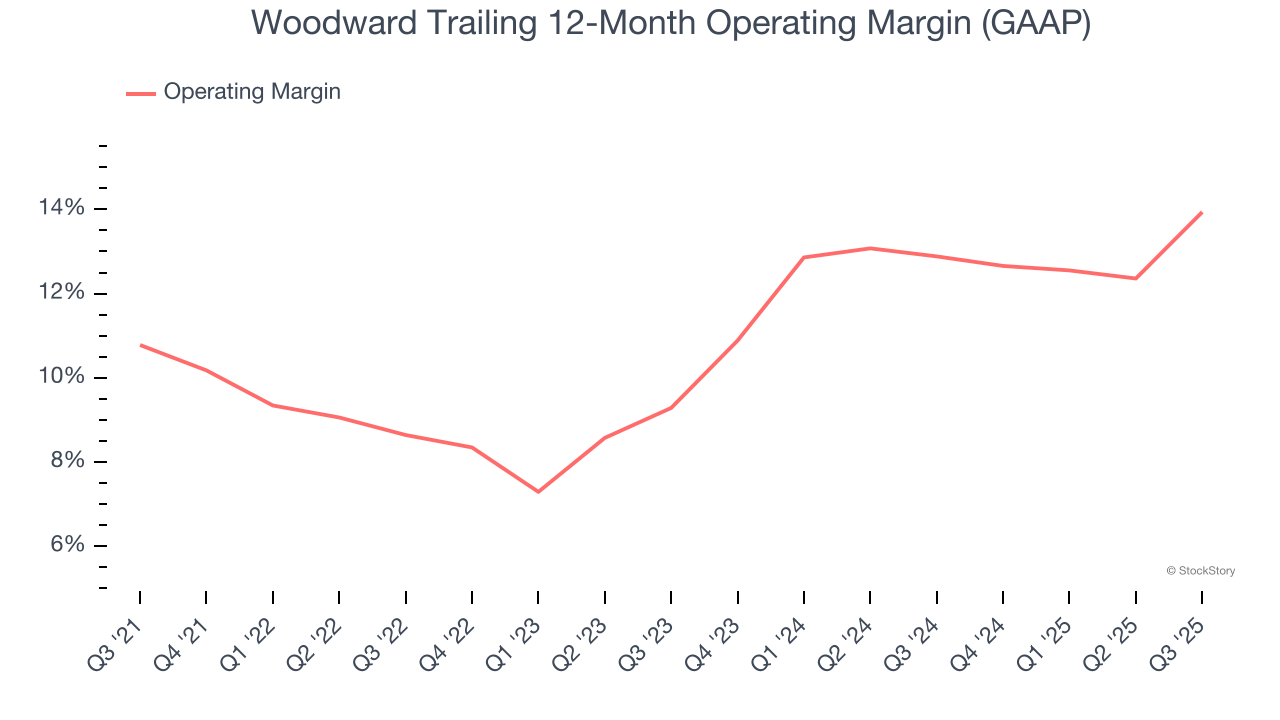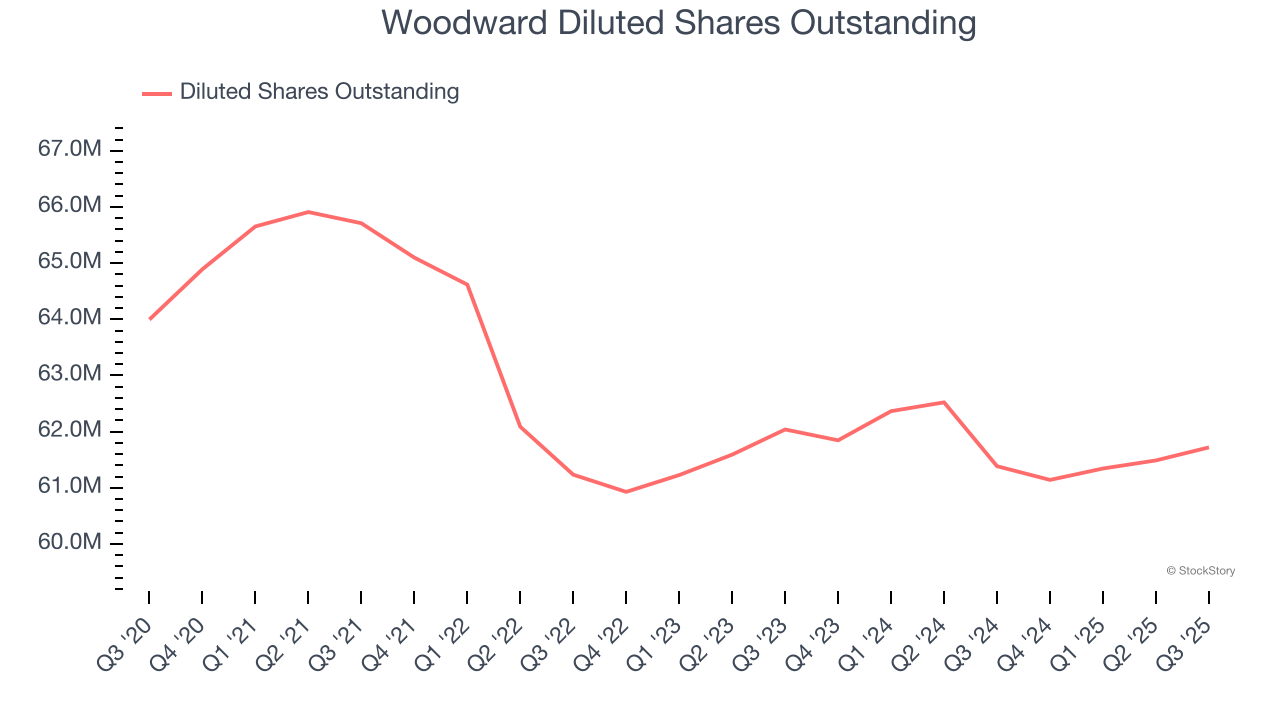
Aerospace and defense company Woodward (NASDAQ:WWD) reported Q3 CY2025 results beating Wall Street’s revenue expectations, with sales up 16.5% year on year to $995.3 million. Its GAAP profit of $2.23 per share was 18.6% above analysts’ consensus estimates.
Is now the time to buy Woodward? Find out by accessing our full research report, it’s free for active Edge members.
Woodward (WWD) Q3 CY2025 Highlights:
- Revenue: $995.3 million vs analyst estimates of $939.6 million (16.5% year-on-year growth, 5.9% beat)
- EPS (GAAP): $2.23 vs analyst estimates of $1.88 (18.6% beat)
- Adjusted EBITDA: $198.2 million vs analyst estimates of $188.8 million (19.9% margin, 5% beat)
- EPS (GAAP) guidance for the upcoming financial year 2026 is $7.75 at the midpoint, missing analyst estimates by 2.5%
- Operating Margin: 17%, up from 11.2% in the same quarter last year
- Free Cash Flow Margin: 18.2%, up from 13.8% in the same quarter last year
- Market Capitalization: $15.75 billion
Company Overview
Initially designing controls for water wheels in the early 1900s, Woodward (NASDAQ:WWD) designs, services, and manufactures energy control products and optimization solutions.
Revenue Growth
Examining a company’s long-term performance can provide clues about its quality. Any business can put up a good quarter or two, but many enduring ones grow for years. Over the last five years, Woodward grew its sales at a mediocre 7.4% compounded annual growth rate. This fell short of our benchmark for the industrials sector and is a poor baseline for our analysis.

We at StockStory place the most emphasis on long-term growth, but within industrials, a half-decade historical view may miss cycles, industry trends, or a company capitalizing on catalysts such as a new contract win or a successful product line. Woodward’s annualized revenue growth of 10.6% over the last two years is above its five-year trend, suggesting its demand recently accelerated. 
This quarter, Woodward reported year-on-year revenue growth of 16.5%, and its $995.3 million of revenue exceeded Wall Street’s estimates by 5.9%.
Looking ahead, sell-side analysts expect revenue to grow 8% over the next 12 months, a slight deceleration versus the last two years. Still, this projection is above the sector average and indicates the market sees some success for its newer products and services.
Microsoft, Alphabet, Coca-Cola, Monster Beverage—all began as under-the-radar growth stories riding a massive trend. We’ve identified the next one: a profitable AI semiconductor play Wall Street is still overlooking. Go here for access to our full report.
Operating Margin
Woodward has managed its cost base well over the last five years. It demonstrated solid profitability for an industrials business, producing an average operating margin of 11.4%.
Analyzing the trend in its profitability, Woodward’s operating margin rose by 3.2 percentage points over the last five years, as its sales growth gave it operating leverage.

This quarter, Woodward generated an operating margin profit margin of 17%, up 5.8 percentage points year on year. This increase was a welcome development and shows it was more efficient.
Earnings Per Share
We track the long-term change in earnings per share (EPS) for the same reason as long-term revenue growth. Compared to revenue, however, EPS highlights whether a company’s growth is profitable.
Woodward’s EPS grew at a remarkable 14% compounded annual growth rate over the last five years, higher than its 7.4% annualized revenue growth. This tells us the company became more profitable on a per-share basis as it expanded.

Diving into Woodward’s quality of earnings can give us a better understanding of its performance. As we mentioned earlier, Woodward’s operating margin expanded by 3.2 percentage points over the last five years. On top of that, its share count shrank by 3.6%. These are positive signs for shareholders because improving profitability and share buybacks turbocharge EPS growth relative to revenue growth. 
Like with revenue, we analyze EPS over a shorter period to see if we are missing a change in the business.
For Woodward, its two-year annual EPS growth of 38.1% was higher than its five-year trend. We love it when earnings growth accelerates, especially when it accelerates off an already high base.
In Q3, Woodward reported EPS of $2.23, up from $1.36 in the same quarter last year. This print easily cleared analysts’ estimates, and shareholders should be content with the results. Over the next 12 months, Wall Street expects Woodward’s full-year EPS of $7.19 to grow 9%.
Key Takeaways from Woodward’s Q3 Results
We were impressed by how significantly Woodward blew past analysts’ revenue expectations this quarter. We were also glad its EPS outperformed Wall Street’s estimates. On the other hand, its full-year EPS guidance missed. Overall, we think this was a solid quarter with some key areas of upside. The stock traded up 1.4% to $264.12 immediately after reporting.
Woodward may have had a good quarter, but does that mean you should invest right now? What happened in the latest quarter matters, but not as much as longer-term business quality and valuation, when deciding whether to invest in this stock. We cover that in our actionable full research report which you can read here, it’s free for active Edge members.
